Opinion & Analysis
Jonas Blixt Case Study: From Back Pain to PGA Tour Win
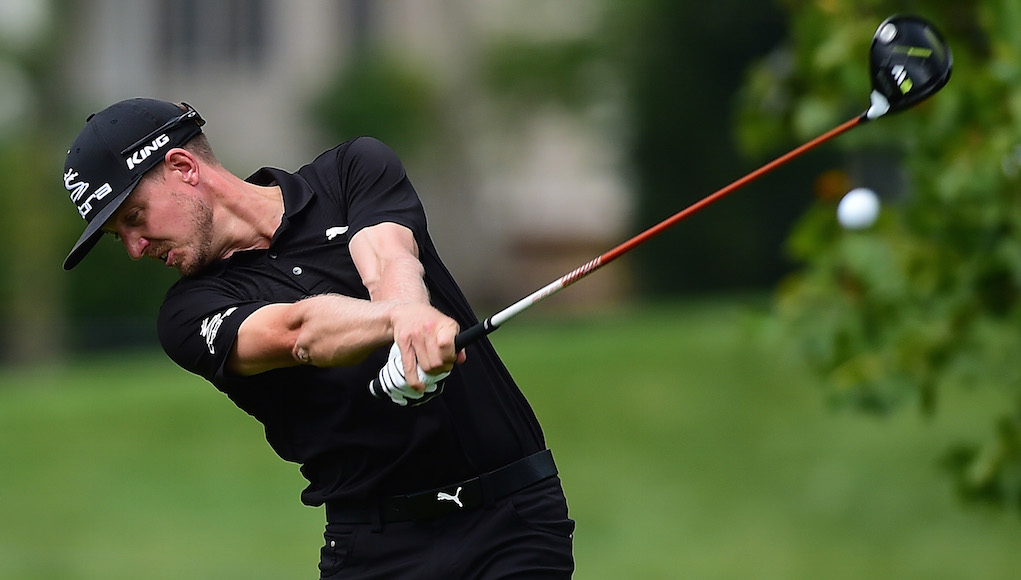
This is a case study on professional golfer Jonas Blixt and his eight-month journey from severe and persistent back pain to a PGA Tour win. It was written to offer insight into the work that a dedicated professional put into his body and his game after a setback due to a significant injury. The case study also serves to highlight the importance of training for posture, spinal strength, and shoulder girdle stability: three areas of training that are often misunderstood and under-appreciated.
The majority of Jonas’ rehab and progression forward was performed using GravityFit exercise techniques and products. GravityFit is an Australian-based company that specializes in a science-based approach to training the body for spinal strength, injury prevention, posture, and golf movement patterns.
Background: Jonas, 32, and is in his sixth season on the PGA Tour. He’s won three times in his career (2012 Frys.com Open, 2013 Greenbrier Classic, 2017 Zurich Classic), and his best finish in a major came in 2012 when he finished T2 at the Masters.
Strengths: Putting, Around the Green. Career-average rank of 33rd in Strokes Gained Putting. Career-average rank of 36th in Strokes Gained Around the Green.
Weaknesses: Off the Tee, Iron Play. Career-average rank of 143rd Strokes Gained Off the Tee. Career-average rank of 158th in Strokes Gained Approach the Green.
Physical Training History: College program at Florida State University. Exposure to various different methods of training stability, mobility, strength, and power since turning professional.
First Contact
Jonas came to see me with after having received two cortisone shots for back pain resulting from herniated discs leading to nerve compression in his lower back. He also received another shot for pain referring into his left glute/hip, suspected at the time to be caused by facet joint inflammation. His desire was initially to return to a pain-free state, and then to improve his long game by hitting more fairways and greens, thereby gaining strokes on the field in the Strokes Gained Off the Tee and Strokes Gained Approach the Green categories. If that outcome could be accompanied by an increase in distance, then that would be a bonus.
After conducting the initial screening and assessment, I highlighted the following areas as priorities for improvement:
- Lumbar and cervical spine posture (lower back and neck).
- Core awareness, stability, and control.
- Arm and body connection movement pattern in rotation.
- Quality of rotation movement pattern from thoracic spine (mid and upper back).
- Mobility in right shoulder (external rotation), thoracic spine (rotation and extension), ankle (dorsi flexion), and quad tightness.
I believed that improving these areas would not only help Jonas move better in his golf swing, but more importantly at that stage, help take strain away from his lower back.
Of particular interest was how Jonas performed in a series of tests for awareness control and stability of the lumbar core (think core muscles and lower back). This seven-stage series of tests is called the Core Body Benchmark. It was developed by GravityFit to provide a more objective measure of core control that could be easily administered in any setting.
Jonas failed the last four tests in the series:
- Hinge Forward
- Hinge Forward with Rotation
- Single Leg Hinge Forward
- Single Leg Rotation
Despite a history of core training, Jonas was unable to use his core muscles effectively in the movements that he repeated up to a thousand times per week: hinging forward, balancing, and rotating (the key components of the golf swing). Click through for more info on the Core Body Benchmark testing protocol.
Initial Program: These assessment findings, combined with the recent back injury, immediately lead me to write Jonas’ first program using predominantly GravityFit tools and techniques, which are specifically designed for strengthening the spine and improving posture. Luckily, we had a few weeks before the first tournament of the 2017 season, so it was time to go work. Below is a snapshot of the initial program, including a few photos of Jonas and myself demonstrating the exercises.
Program 1
A very basic daily program that focused on establishing good posture, as well as training basic spinal stability and quality of rotation. This program also included a 20-minute walk in the soft sand (Jonas lives near the beach) and a range of self-massage and stretching exercises. The exercises are below and were performed using the Gravity Cap and GravityFit TPro.
Movement Patterns
- 1A: Gravity Cap Walk
- 1B: Gravity Cap Knee Lifts
- 1C: Stomp and Pulse
- 1D: Split-Stance Backswing
- 1E: Split-Stance Follow Through
Conditioning
- 1: Beach Walk
Gravity Cap Knee Lifts (Figure 1): This exercise establishes a solid upright posture, stretching tall against the resistance provided by the Gravity Cap.
Stomp and Pulse (Figure 2): Here I’m training golf posture using the TPro for postural feedback and scapula/shoulder stability and control.
Split-Stance Backswing (Figure 3): Training dynamic rotation using the TPro while working on balance and control with the split stance.
Program 2
After two weeks of the initial program, we progressed into more traditional exercises (squat, lunge, push, pull) with the addition of the GravityFit TPro and Core Awareness Belt (CAB) to give audio and kinaesthetic feedback on quality of movement and postural control. We also advanced the specific posture and rotation exercises to add some more complexity and challenge. As you can see in the video below, at this stage even a simple bodyweight squat was a challenge for Jonas.
Strength
- 1A: Body-Weight Squat
- 1B: Push Up
- 1C: BW Backward Lunge
- 1D: Cable 1-Arm Row
- 1E: Mini Mountain Climber
- 1F: Pallof Press
Movement Patterns
- 1A: Gravity Cap Hurdle Walk
- 1B: Split-Squat Rotate
- 1C: Jonas Backswing Drill
Jonas Backswing Drill (Figure 4): Jonas is using the TPro and the Core Awareness Belt (CAB). Notice the hand position: right palm up, left palm down. This was a custom feel for Jonas that he wanted to train in his backswing.
Video 1
Body-Weight Squat (Video 1): Jonas initially struggled to squat while maintaining his posture. A combination of ankle mobility restriction and lack of core control made it very difficult for him.
About 5 weeks after our initial session, the fall series events came around Jonas decided to play. We continued to gradually increase the complexity of the exercises, each program requiring a little more from the perspective of stability and postural control. The majority was still only using bodyweight and some light band resistance.
Programs 3 and 4
At this point, Jonas was really starting to improve his movement quality and balance.
Split-Hand, One-Foot Push Up (Figure 5): An advanced version of a push up, again using the TPro and CAB to provide feedback on the quality of posture and movement. This is a fairly typical example of advancing an exercise’s difficulty without adding external load.
Program 3
Strength
- 1A: Overhead Squat
- 1B: Split-Hand, One-Foot Push Up
- 1C: Lateral Lunge with Knee Lift
- 1D: Single-Arm, Split-Stance Pulldown
- 1E: Prone Turn Under
- 1F: Split-Stance Pallof Press
- 1G: Lying Glute Bridge, Foot Up
Movement Patterns
- 1A: Gravity Cap Hurdle Walk
- 1B: Jonas Backswing Drill
- 1C: Follow Through
Program 4
Stability
- 1A: Knee Band Crab Walks
- 1B: Crawling
Strength
- 1A: Goblet Squat
- 1B: Resistance Band Push Up
- 2A: Bulgarian Split Squat
- 2B: Cable 1-Arm Row
- 3A: 1-Leg Band Push Out
- 3B: Pallof Hold
Video 2
Lateral Lunge with Knee Lift (Video 2): This exercise is really quite challenging to perform with balance and control while avoiding the audio feedback that the CAB provides when the core isn’t working properly.
Video 3
Single-Arm, Split-Stance Pulldown (Video 3): Again, a variation on a simple exercise with the aim of introducing a balance and co-ordination challenge.
Return to Playing
Jonas’ transition back to golf wasn’t exactly smooth. Despite showing significant signs of improvements in his movement quality and overall back pain, he was still struggling with occasional flashes of pain into his left glute during play and when getting up and down from a low, seated position. His results and Strokes Gained statistics tell the story of on-course performance.
- Results: Four events, three missed cuts and a T48
- Strokes Gained Off The Tee: -1.441
- Strokes Gained Approach the Green: -0.464
Over the six-week Christmas break, it was decided that a complete rest from golf was a good idea. This would allow Jonas’ back more time to heal and also offered him the opportunity to receive some treatment and advice for the occasional flashes of pain that seemed to be hanging around. Dr. Craig Davies and the Swedish Spine Institute had very effective input into helping resolve the issue, which was eventually identified as a glute med/min tendonitis. Meanwhile, we continued to progress the difficulty of the training programs and added some more significant load.
Program 5
We moved into more traditional strength movements and methods of loading. These were all done still using the GravityFit equipment to provide postural feedback.
Stability
- 1A: Fall to Wall – 2 Arms
- 1B: Single Arm Turn Under
Strength
- 1A: BB Front Squat
- 1B: DB Bent Over Row
- 2A: DB Step Up
- 2B: Torsonator Shoulder Press
- 3A: Suspended Leg Lift – Bent Knee
- 3B: Prone Hold 2 Limb Switch
Barbell Front Squat (Figure 6): This is a classic strength exercise that requires excellent squat mechanics and postural control to be performed safely.
Torsonator Shoulder Press (Figure 7): Using a uni-lateral (one-sided) external loading technique requires more from the core and postural stabilizers. It was a big step forward when Jonas was able to comfortably perform these exercises.
2017
With the New Year came a return to practice and first start in the Sony Open. All traces of pain by this time had been eliminated, and Jonas’ elusive long game seemed to be showing significant signs improvement through his first few events of the year.
- Strokes Gained Approach Green: -0.217 (his career average was -0.44)
- Strokes Gained Off the Tee: +0.242 (his career average was -0.24)
- Club Head Speed: Increased to 112.5 mph from (108.5 mph at first event of 2017 fall season)
Building to a Win
As we moved forward into the spring tournaments, I progressed Jonas on to much more traditional strength-and-conditioning training sessions while still using the GravityFit equipment to provide feedback on posture and technique. We also continued to retain the daily exercises that focus on postural control with spinal strength and stability.
Program 6
Strength
- 1: Barbell Squat to Box
- 2: Dumbell Reverse Lunge
- 3: Barbell Hip Thrust
- 4A: Underhand Pull Up
- 4B: Plate-Weighted Push Up
- 4C: Dumbell High Row
Core
- 1A: V Sit
- 1B: Split-Stance Pallof Press
- 1C: Back Hyperextensions – Arms Up
Plate-Weighted Push Up (Figure 8): We moved to standard variations of exercises like this and adding more external load with the aim of eliciting a strength and muscle growth response (as opposed to stability before).
Video 4
Barbell Squat to Box (Video 4): We used the box to avoid the lower-back strain that is most acute at the bottom of a squat. This is a natural progression toward full squats.
Jonas should be applauded for his tenacity, conviction, and work ethic during this tough time. He has used a potentially career-threatening injury as an opportunity to improve his body to new levels. He’s also become more resistant to injury using the GravityFit techniques and equipment to develop superior postural awareness and control, plus strength and stability around his spine, shoulders, and hips. These improvements, combined with better rotational movement patterns, have improved his body for golf and seem to be having a positive transfer to his ball striking.
This all went along way to helping Jonas collect his third PGA Tour win at the Zurich Classic of New Orleans with partner Cameron Smith. Cameron is also a client of mine, and he has been using GravityFit equipment and techniques for years to train his posture and movement patterns.
For more information on the GravityFit exercise tools and techniques I used with Jonas, as well as Cameron Smith, click through to GravityFit’s website. For more information on my online training, service check out my Golf Fit Pro website.
- LIKE99
- LEGIT6
- WOW3
- LOL2
- IDHT0
- FLOP1
- OB2
- SHANK8
19th Hole
Vincenzi’s LIV Golf Singapore betting preview: Course specialist ready to thrive once again

After another strong showing in Australia, LIV Golf will head to Sentosa Golf Club in Singapore looking to build off of what was undoubtedly their best event to date.
Sentosa Golf Club sits on the southern tip of Singapore and is one of the most beautiful courses in the world. The course is more than just incredible scenically; it was also rated 55th in Golf Digest’s top-100 courses in 2022-2023 and has been consistently regarded as one of the best courses in Asia. Prior to being part of the LIV rotation, the course hosted the Singapore Open every year since 2005.
Sentosa Golf Club is a par 71 measuring 7,406 yards. The course will require precise ball striking and some length off the tee. It’s possible to go low due to the pristine conditions, but there are also plenty of hazards and difficult spots on the course that can bring double bogey into play in a hurry. The Bermudagrass greens are perfectly manicured, and the course has spent millions on the sub-air system to keep the greens rolling fast. I spoke to Asian Tour player, Travis Smyth, who described the greens as “the best [he’s] ever played.”
Davis Love III, who competed in a Singapore Open in 2019, also gushed over the condition of the golf course.
“I love the greens. They are fabulous,” the 21-time PGA Tour winner said.
Love III also spoke about other aspects of the golf course.
“The greens are great; the fairways are perfect. It is a wonderful course, and it’s tricky off the tee.”
“It’s a long golf course, and you get some long iron shots. It takes somebody hitting it great to hit every green even though they are big.”
As Love III said, the course can be difficult off the tee due to the length of the course and the trouble looming around every corner. It will take a terrific ball striking week to win at Sentosa Golf Club.
In his pre-tournament press conference last season, Phil Mickelson echoed many of the same sentiments.
“To play Sentosa effectively, you’re going to have a lot of shots from 160 to 210, a lot of full 6-, 7-, 8-iron shots, and you need to hit those really well and you need to drive the ball well.”
Golfers who excel from tee to green and can dial in their longer irons will have a massive advantage this week.
Stat Leaders at LIV Golf Adelaide:
Fairways Hit
1.) Louis Oosthuizen
2.) Anirban Lahiri
3.) Jon Rahm
4.) Brendan Steele
5.) Cameron Tringale
Greens in Regulation
1.) Brooks Koepka
2.) Brendan Steele
3.) Dean Burmester
4.) Cameron Tringale
5.) Anirban Lahiri
Birdies Made
1.) Brendan Steele
2.) Dean Burmester
3.) Thomas Pieters
4.) Patrick Reed
5.) Carlos Ortiz
LIV Golf Individual Standings:
1.) Joaquin Niemann
2.) Jon Rahm
3.) Dean Burmester
4.) Louis Oosthuizen
5.) Abraham Ancer
LIV Golf Team Standings:
1.) Crushers
2.) Legion XIII
3.) Torque
4.) Stinger GC
5.) Ripper GC
LIV Golf Singapore Picks
Sergio Garcia +3000 (DraftKings)
Sergio Garcia is no stranger to Sentosa Golf Club. The Spaniard won the Singapore Open in 2018 by five strokes and lost in a playoff at LIV Singapore last year to scorching hot Talor Gooch. Looking at the course setup, it’s no surprise that a player like Sergio has played incredible golf here. He’s long off the tee and is one of the better long iron players in the world when he’s in form. Garcia is also statistically a much better putter on Bermudagrass than he is on other putting surfaces. He’s putt extremely well on Sentosa’s incredibly pure green complexes.
This season, Garcia has two runner-up finishes, both of them being playoff losses. Both El Camaleon and Doral are courses he’s had success at in his career. The Spaniard is a player who plays well at his tracks, and Sentosa is one of them. I believe Sergio will get himself in the mix this week. Hopefully the third time is a charm in Singapore.
Paul Casey +3300 (FanDuel)
Paul Casey is in the midst of one of his best seasons in the five years or so. The results recently have been up and down, but he’s shown that when he’s on a golf course that suits his game, he’s amongst the contenders.
This season, Casey has finishes of T5 (LIV Las Vegas), T2 (LIV Hong Kong), and a 6th at the Singapore Classic on the DP World Tour. At his best, the Englishman is one of the best long iron players in the world, which makes him a strong fit for Sentosa. Despite being in poor form last season, he was able to fire a Sunday 63, which shows he can low here at the course.
It’s been three years since Casey has won a tournament (Omega Dubai Desert Classic in 2021), but he’s been one of the top players on LIV this season and I think he can get it done at some point this season.
Mito Pereira +5000 (Bet365)
Since Mito Pereira’s unfortunate demise at the 2022 PGA Championship, he’s been extremely inconsistent. However, over the past few months, the Chilean has played well on the International Series as well as his most recent LIV start. Mito finished 8th at LIV Adelaide, which was his best LIV finish this season.
Last year, Pereira finished 5th at LIV Singapore, shooting fantastic rounds of 67-66-66. It makes sense why Mito would like Sentosa, as preeminent ball strikers tend to rise to the challenge of the golf course. He’s a great long iron player who is long and straight off the tee.
Mito has some experience playing in Asia and is one of the most talented players on LIV who’s yet to get in the winner’s circle. I have questions about whether or not he can come through once in contention, but if he gets there, I’m happy to roll the dice.
Andy Ogletree +15000 (DraftKings)
Andy Ogletree is a player I expected to have a strong 2024 but struggled early in his first full season on LIV. After failing to crack the top-25 in any LIV event this year, the former U.S. Amateur champion finally figured things out, finished in a tie for 3rd at LIV Adelaide.
Ogletree should be incredible comfortable playing in Singapore. He won the International Series Qatar last year and finished T3 at the International Series Singapore. The 26-year-old was arguably the best player on the Asian Tour in 2023 and has been fantastic in the continent over the past 18 months.
If Ogletree has indeed found form, he looks to be an amazing value at triple-digit odds.
- LIKE3
- LEGIT3
- WOW1
- LOL2
- IDHT0
- FLOP2
- OB0
- SHANK0
Opinion & Analysis
Ryan: Lessons from the worst golf instructor in America

In Tampa, there is a golf course that boasts carts that do not work, a water range, and a group of players none of which have any chance to break 80. The course is overseen by a staff of crusty men who have succeeded at nothing in life but ending up at the worst-run course in America. However, this place is no failure. With several other local courses going out of business — and boasting outstanding greens — the place is booked full.
While I came for the great greens, I stayed to watch our resident instructor; a poor-tempered, method teacher who caters to the hopeless. At first, it was simply hilarious. However, after months of listening and watching, something clicked. I realized I had a front-row seat to the worst golf instructor in America.
Here are some of my key takeaways.
Method Teacher
It is widely accepted that there are three types of golf instructors: system teachers, non-system teachers, and method teachers. Method teachers prescribe the same antidote for each student based on a preamble which teachers can learn in a couple day certification.
Method teaching allows anyone to be certified. This process caters to the lowest caliber instructor, creating the illusion of competency. This empowers these underqualified instructors with the moniker of “certified” to prey on the innocent and uninformed.
The Cult of Stack and Jilt
The Stack and Tilt website proudly boasts, “A golfer swings his hands inward in the backswing as opposed to straight back to 1) create power, similar to a field goal kicker moving his leg in an arc and 2) to promote a swing that is in-to-out, which produces a draw (and eliminates a slice).”
Now, let me tell you something, there is this law of the universe which says “energy can either be created or destroyed,” so either these guys are defying physics or they have no idea what they are taking about. Further, the idea that the first move of the backswing determines impact is conjecture with a splash of utter fantasy.
These are the pontifications of a method — a set of prescriptions applied to everyone with the hope of some success through the placebo effect. It is one thing for a naive student to believe, for a golf instructor to drink and then dispel this Kool-Aid is malpractice.
Fooled by Randomness
In flipping a coin, or even a March Madness bet, there is a 50-50 chance of success. In golf, especially for new players, results are asymmetric. Simply put: Anything can happen. The problem is that when bad instructors work with high handicappers, each and every shot gets its own diagnosis and prescription. Soon the student is overwhelmed.
Now here’s the sinister thing: The overwhelming information is by design. In this case, the coach is not trying to make you better, they are trying to make you reliant on them for information. A quasi Stockholm syndrome of codependency.
Practice
One of the most important scientists of the 20th century was Ivan Pavlov. As you might recall, he found that animals, including humans, could be conditioned into biological responses. In golf, the idea of practice has made millions of hackers salivate that they are one lesson or practice session from “the secret.”
Sunk Cost
The idea for the worst golf instructor is to create control and dependency so that clients ignore the sunk cost of not getting better. Instead, they are held hostage by the idea that they are one lesson or tip away from unlocking their potential.
Cliches
Cliches have the effect of terminating thoughts. However, they are the weapon of choice for this instructor. Add some hyperbole and students actually get no information. As a result, these players couldn’t play golf. When they did, they had no real scheme. With no idea what they are doing, they would descend into a spiral of no idea what to do, bad results, lower confidence, and running back to the lesson tee from more cliches.
The fact is that poor instruction is about conditioning players to become reliant members of your cult. To take away autonomy. To use practice as a form of control. To sell more golf lessons not by making people better but through the guise that without the teacher, the student can never reach their full potential. All under the umbrella of being “certified” (in a 2-day course!) and a melee of cliches.
This of course is not just happening at my muni but is a systemic problem around the country and around the world, the consequences of which are giving people a great reason to stop playing golf. But hey, at least it’s selling a lot of golf balls…
- LIKE17
- LEGIT2
- WOW0
- LOL4
- IDHT1
- FLOP1
- OB0
- SHANK19
19th Hole
Vincenzi’s 2024 Zurich Classic of New Orleans betting preview

The PGA TOUR heads to New Orleans to play the 2023 Zurich Classic of New Orleans. In a welcome change from the usual stroke play, the Zurich Classic is a team event. On Thursday and Saturday, the teams play best ball, and on Friday and Sunday the teams play alternate shot.
TPC Louisiana is a par 72 that measures 7,425 yards. The course features some short par 4s and plenty of water and bunkers, which makes for a lot of exciting risk/reward scenarios for competitors. Pete Dye designed the course in 2004 specifically for the Zurich Classic, although the event didn’t make its debut until 2007 because of Hurricane Katrina.
Coming off of the Masters and a signature event in consecutive weeks, the field this week is a step down, and understandably so. Many of the world’s top players will be using this time to rest after a busy stretch.
However, there are some interesting teams this season with some stars making surprise appearances in the team event. Some notable teams include Patrick Cantlay and Xander Schauffele, Rory McIlroy and Shane Lowry, Collin Morikawa and Kurt Kitayama, Will Zalatoris and Sahith Theegala as well as a few Canadian teams, Nick Taylor and Adam Hadwin and Taylor Pendrith and Corey Conners.
Past Winners at TPC Louisiana
- 2023: Riley/Hardy (-30)
- 2022: Cantlay/Schauffele (-29)
- 2021: Leishman/Smith (-20)
- 2019: Palmer/Rahm (-26)
- 2018: Horschel/Piercy (-22)
- 2017: Blixt/Smith (-27)
2024 Zurich Classic of New Orleans Picks
Tom Hoge/Maverick McNealy +2500 (DraftKings)
Tom Hoge is coming off of a solid T18 finish at the RBC Heritage and finished T13 at last year’s Zurich Classic alongside Harris English.
This season, Hoge is having one of his best years on Tour in terms of Strokes Gained: Approach. In his last 24 rounds, the only player to top him on the category is Scottie Scheffler. Hoge has been solid on Pete Dye designs, ranking 28th in the field over his past 36 rounds.
McNealy is also having a solid season. He’s finished T6 at the Waste Management Phoenix Open and T9 at the PLAYERS Championship. He recently started working with world renowned swing coach, Butch Harmon, and its seemingly paid dividends in 2024.
Keith Mitchell/Joel Dahmen +4000 (DraftKings)
Keith Mitchell is having a fantastic season, finishing in the top-20 of five of his past seven starts on Tour. Most recently, Mitchell finished T14 at the Valero Texas Open and gained a whopping 6.0 strokes off the tee. He finished 6th at last year’s Zurich Classic.
Joel Dahmen is having a resurgent year and has been dialed in with his irons. He also has a T11 finish at the PLAYERS Championship at TPC Sawgrass which is another Pete Dye track. With Mitchell’s length and Dahmen’s ability to put it close with his short irons, the Mitchell/Dahmen combination will be dangerous this week.
Taylor Moore/Matt NeSmith +6500 (DraftKings)
Taylor Moore has quickly developed into one of the more consistent players on Tour. He’s finished in the top-20 in three of his past four starts, including a very impressive showing at The Masters, finishing T20. He’s also finished T4 at this event in consecutive seasons alongside Matt NeSmith.
NeSmith isn’t having a great 2024, but has seemed to elevate his game in this format. He finished T26 at Pete Dye’s TPC Sawgrass, which gives the 30-year-old something to build off of. NeSmith is also a great putter on Bermudagrass, which could help elevate Moore’s ball striking prowess.
- LIKE8
- LEGIT3
- WOW1
- LOL1
- IDHT0
- FLOP3
- OB1
- SHANK2
-

 19th Hole2 weeks ago
19th Hole2 weeks agoJustin Thomas on the equipment choice of Scottie Scheffler that he thinks is ‘weird’
-

 19th Hole2 weeks ago
19th Hole2 weeks ago‘Absolutely crazy’ – Major champ lays into Patrick Cantlay over his decision on final hole of RBC Heritage
-

 19th Hole3 weeks ago
19th Hole3 weeks agoTwo star names reportedly blanked Jon Rahm all week at the Masters
-

 19th Hole3 weeks ago
19th Hole3 weeks agoReport: LIV Golf identifies latest star name they hope to sign to breakaway tour
-

 19th Hole3 weeks ago
19th Hole3 weeks agoNeal Shipley presser ends in awkward fashion after reporter claims Tiger handed him note on 8th fairway
-

 19th Hole2 weeks ago
19th Hole2 weeks agoBrandel Chamblee has ‘no doubt’ who started the McIlroy/LIV rumor and why
-

 19th Hole1 week ago
19th Hole1 week agoLET pro gives detailed financial breakdown of first week on tour…and the net result may shock you
-

 Equipment2 weeks ago
Equipment2 weeks agoJason Day on his recent switch into Srixon ZX5 and ZX7 Mk II irons

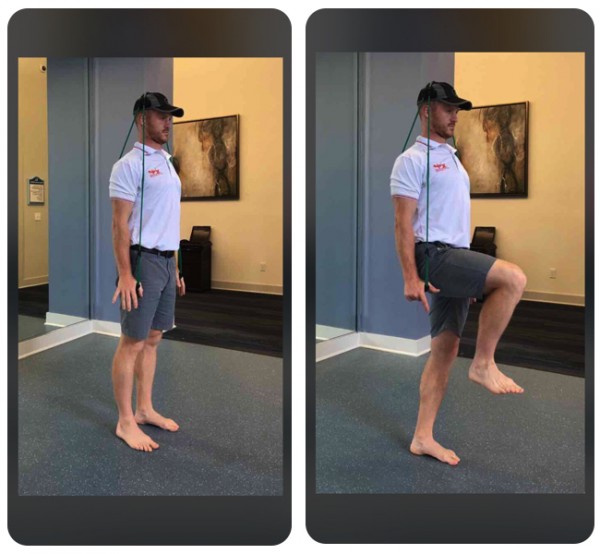
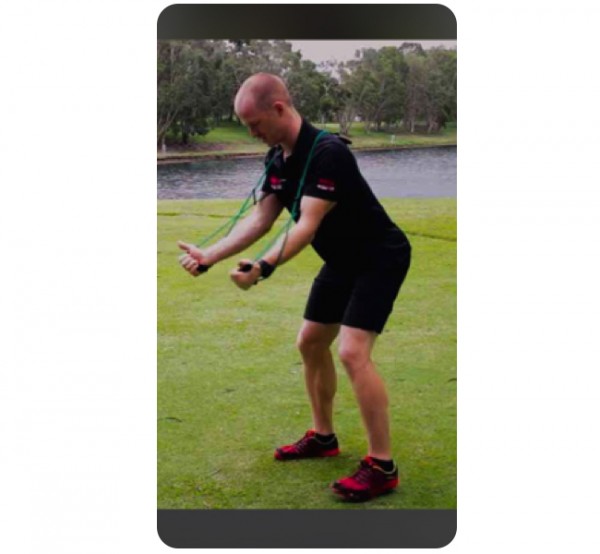
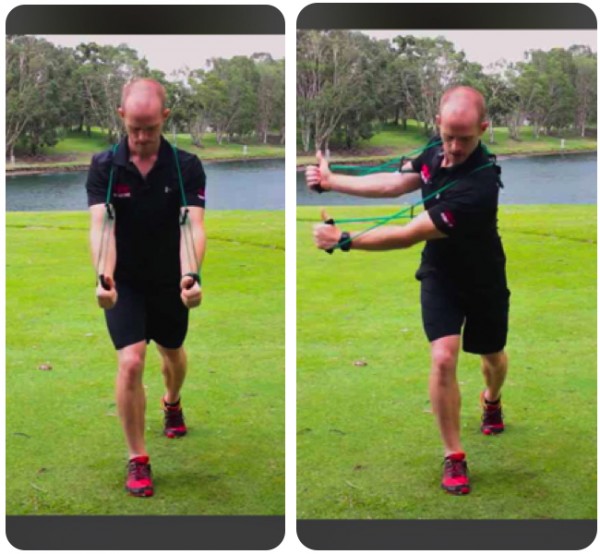
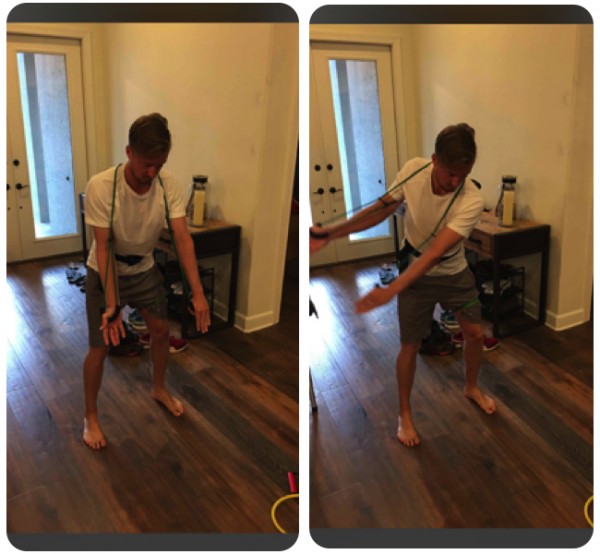
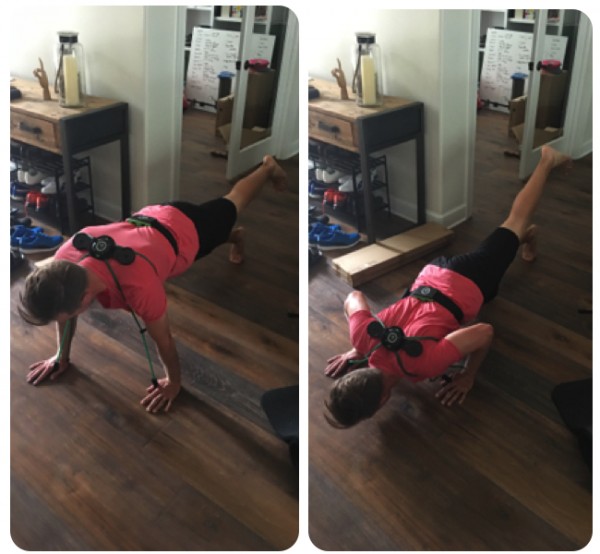
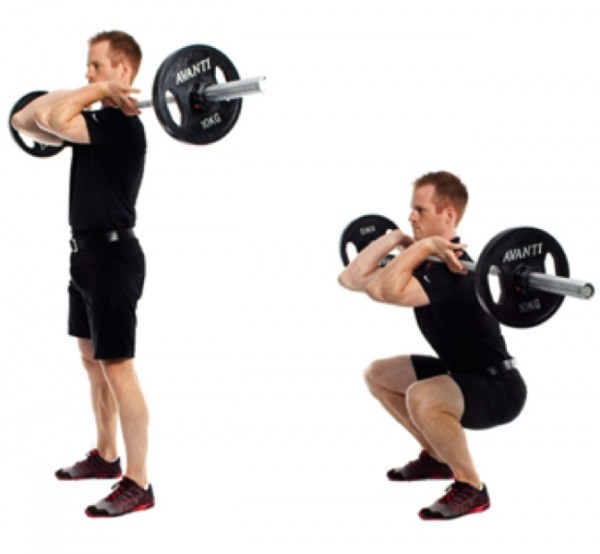
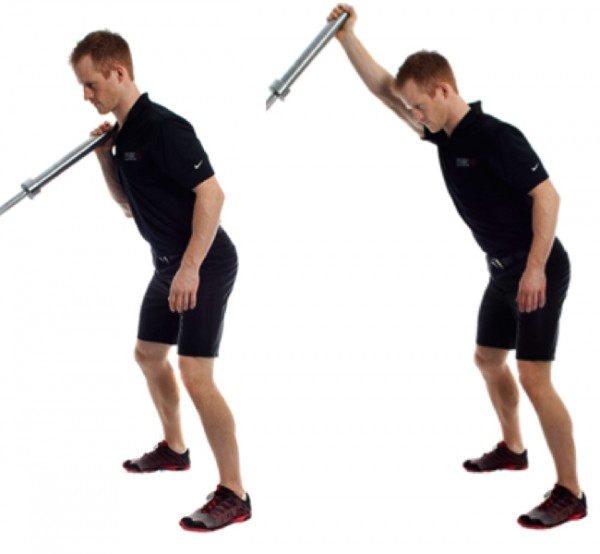
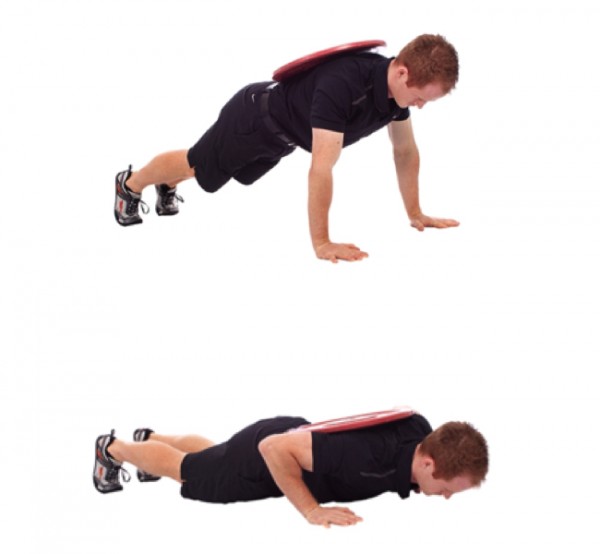

















rosey
Aug 30, 2017 at 7:25 pm
great article!
And in case anyone cares, I’d definitely buy the “swing kit” off gravityfit if were half price. But $111 is crazy expensive!
Gnam
Aug 30, 2017 at 12:22 pm
Was Tiger right about his glutes not activating? 🙂
EngineerBob
Aug 30, 2017 at 3:40 pm
Vertically or horizontally? Now that he’s on all those prescription and recreational drugs he must be totally limpid …. if you know what I mean.
BH
Aug 30, 2017 at 8:54 am
Overall, this is an informative article. I appreciate this because I am someone who has back pain and is constantly working to make sure I keep it in control.
What I don’t appreciate is that the article implies that using GravityFit is THE way to do all of this. I incorporate most of these exercises into my workouts even without your product. So it’s frustrating for me to read this and get the impression that he had to use this product to get back to game shape. Any good fitness instructor could have worked with him and got him back all without that product.
Scott
Aug 30, 2017 at 8:26 am
Yes, proper rest after hitting a thousand balls is overlooked, especially by the young. There are always exceptions to the rule, but most will not escape the inevitable physical breakdown
Oppai
Aug 30, 2017 at 1:55 am
Geez, with all these exercises he had to do get fit and pain free, you would have thought he was a lazy fat slob of a weekend warrior trying to cut it on tour. Unbelievable that a player has to do all this just to stay with it on tour now.
Chris
Aug 30, 2017 at 7:46 am
It’s only in this particular case. Not every tour player need to go through all this.
SH
Aug 29, 2017 at 3:04 pm
Great article.. we hear that these guys train, but rarely get a glimpse into their regiment. Very cool!
Brad
Aug 29, 2017 at 3:36 pm
Visualize the training regimen and you too will be great in your mind.
SH
Aug 29, 2017 at 4:07 pm
I don’t think being great in our mind is an issue for any of us
Brad M.
Aug 29, 2017 at 1:57 pm
I’ve been a fan of bodyweight work for a long time. Adding resistance bands and the occasional extra load of weight (like in the standard pushup) is great after strength/stamina and fixing general fitness deficiencies have been accomplished. For the non-pro who may play/practice 2-10 times a month, are free weights and intensive weight training advised? Especially if we can’t afford (or simply won’t use) an expert for ongoing technical assistance?
Brad
Aug 29, 2017 at 3:34 pm
The average recreational play will never make a commitment to conditioning and training because they ‘don’t have the time’. They simply play for fun with their equally decrepit buddies and yukking their way painfully slowly down the course.
Of course a new set of SGI clubs ($1395), latest driver and fairways ($795) and a studio putter ($395) should make a significant improvement in their game. Oh, and ProV1s($50) for total tour quality WITB weapons. It’s a shame the clubs will get scratched up.
Instructors. trainers? Forget it, better to buy a rangefinder and great shoes and nifty clothes.
Boss
Aug 29, 2017 at 10:56 am
So, what you’re saying is, he wasn’t very fit before. LOL
Now he’s a bit more fitter, stronger.
But why not also change his swing and have him lift his left heel and swing with a more classic swing and let go of the finish and not strike a pose with feet down and torque twist that caused his problem like all modern swingers with the same problem?
Brad
Aug 29, 2017 at 10:53 am
Pro golfers injure their spine because they practice in an insane obsessive-compulsive manner. It’s all due to overuse, overstress and breakdown injury which is not given enough time to heal. IOW, they are oblivious to their injurious mental state and just continue on a downward spiral. These guys just fail and fade away. Blixt is an exception, but his chronic injury will haunt him forever.